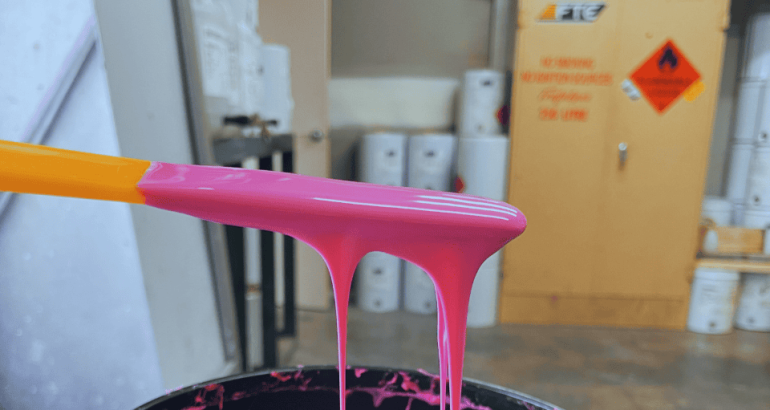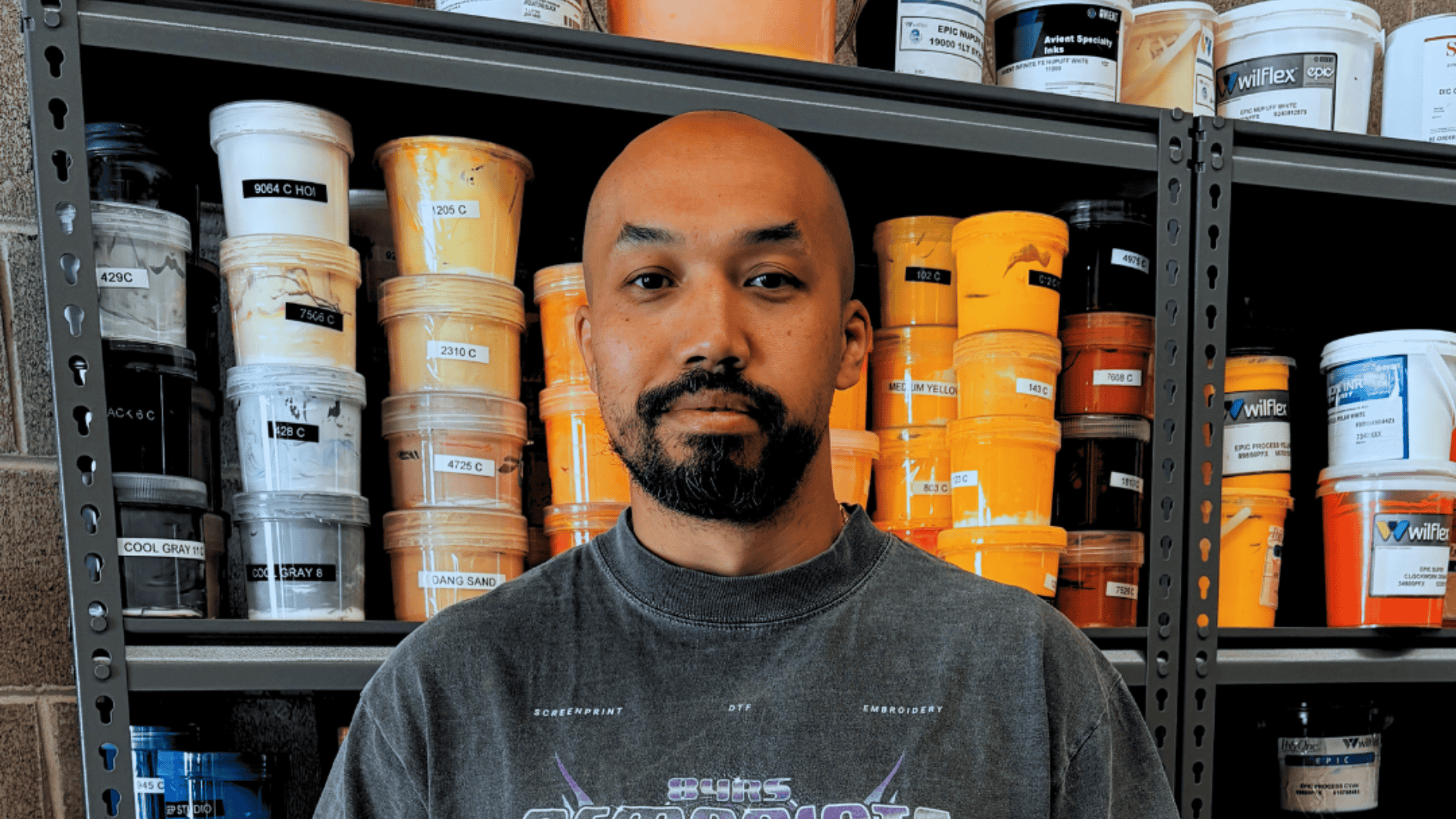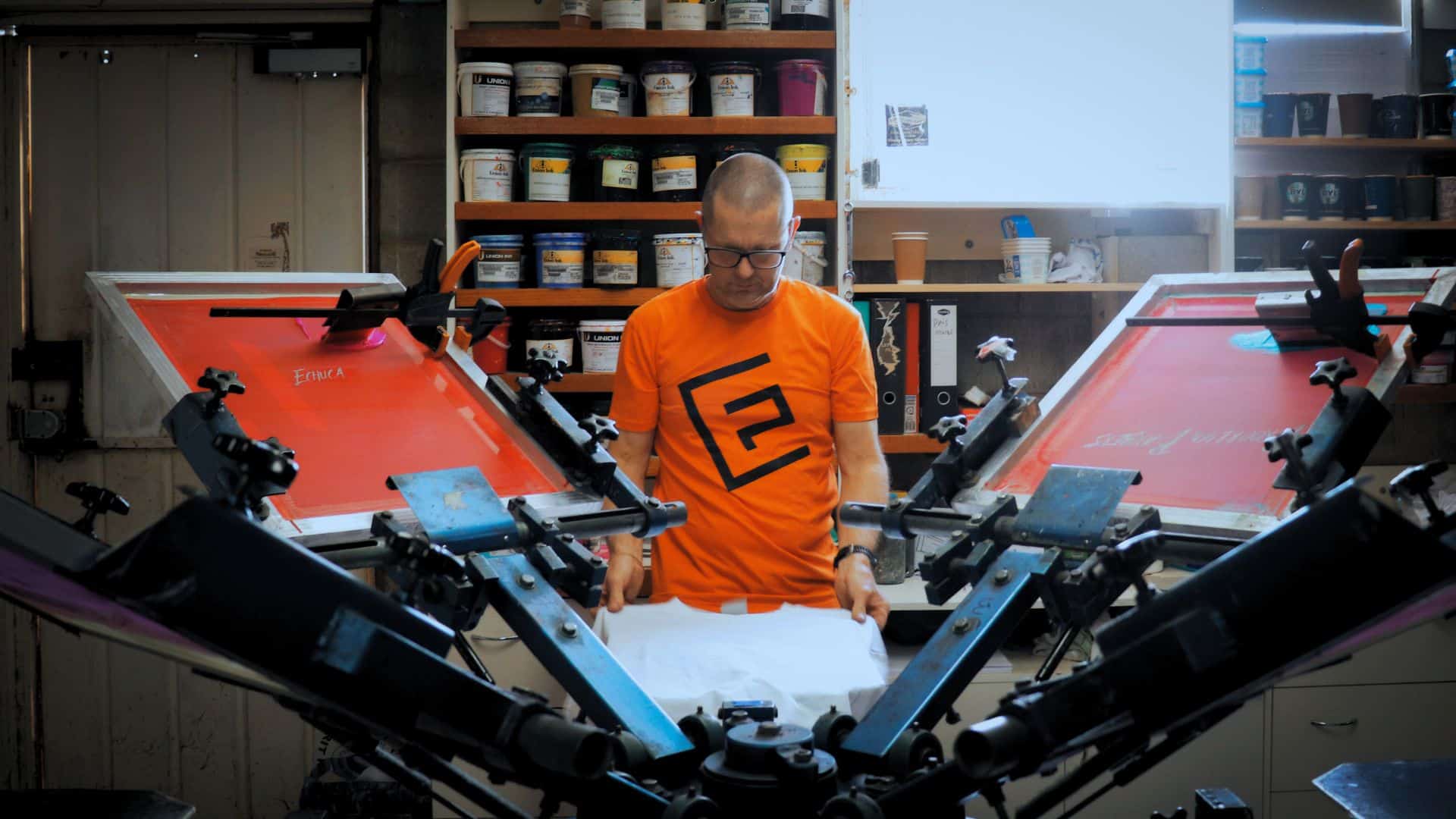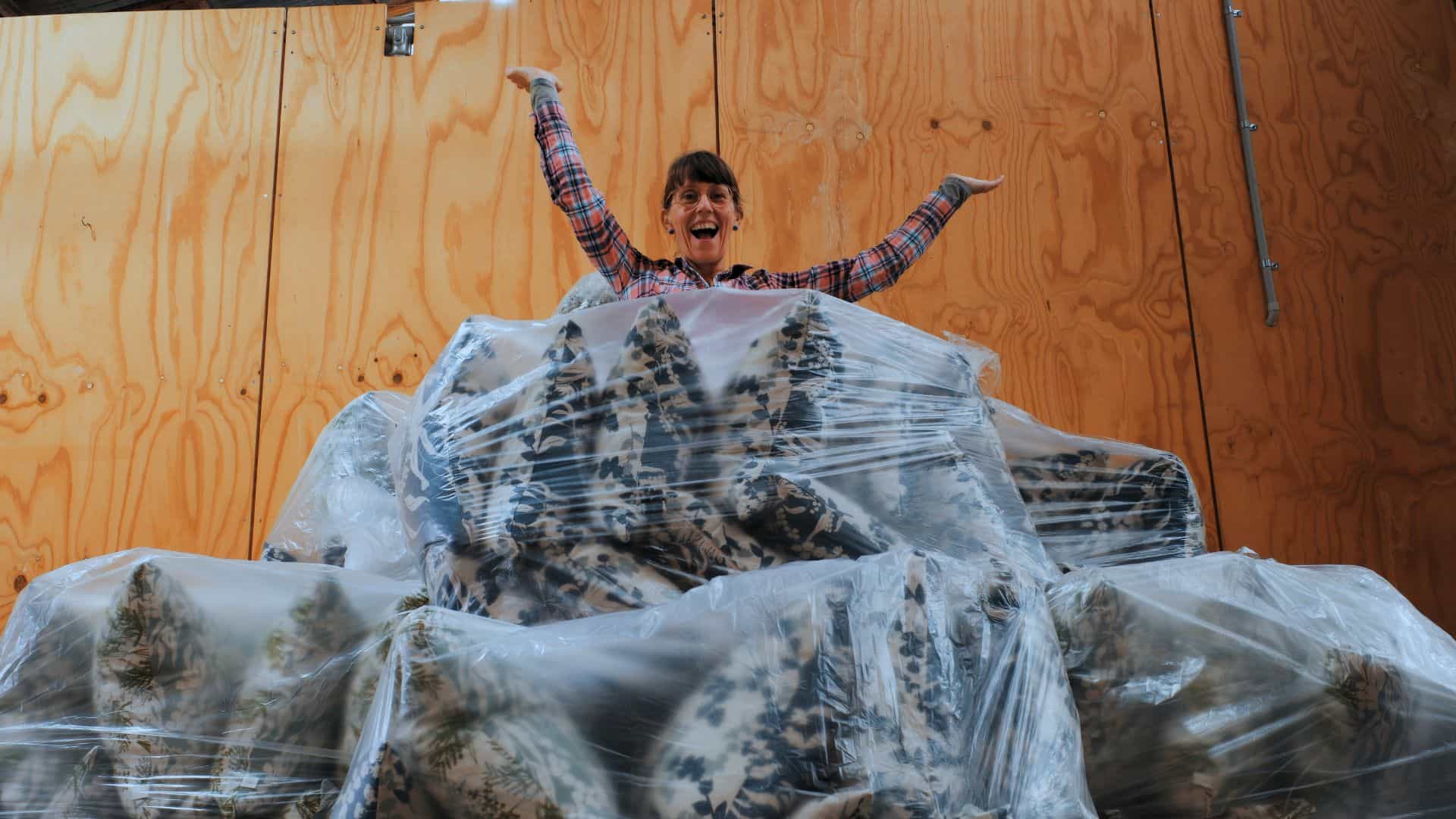What is Emulsion?
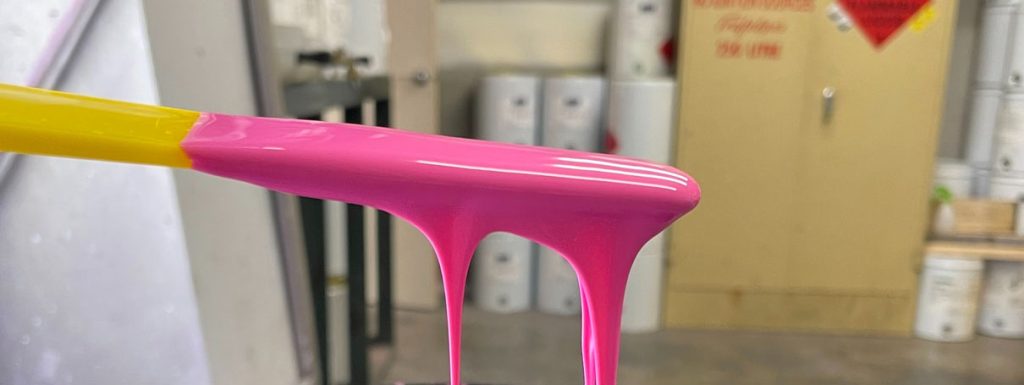
Emulsion is a liquid solution that allows you to create a stencil to commence the screen-printing process.
But what is it?
It is a light sensitive liquid solution that is applied to a sink screen with a screen coater, also know as a screen coating trough or tray. Once the emulsion is set/dry on the silk screen, it can then be developed by using a light source that emits ultraviolet (UV) light rays.
How does Light Affect Emulsion?
There are many light sources that can be used to create a silk screen stencil. They can use:
- Fluorescent tubes
- Halogen
- Natural sunlight
- Metal Halide; and
- LED (standard or UV)
When the set emulsion is exposed to light with UV rays, it will begin curing. Not all UV spectrums are sufficient for screen exposure, and choosing the right globe is important. Generally, the greater the UV spectrum /wavelength the quicker the emulsion will set.

Usually a “Step Test” is completed to refine to optimum times, where a coated screen is exposed in sections for increasing amounts of time and then washed out to view image resolution, whether the stencil washes out too easily/is very hard, as these are good indicators of where you are heading for time.
It is important to work with the emulsion in a dark room or a room where light can be controlled, i.e. yellow light or the like. Avoid any exposure of daylight or sunlight to your dry coated screens, as this will initiate the exposure process – even if you are not ready!

What is the Best Way to Store/Keep Emulsion?
- Storing emulsion in a controlled environment is our recommended solution. Having temperature regulated storage or room will prolong the shelf life of your emulsion opposed to keeping it in an environment where temperature can vary greatly. Cool and dark places are ideal for storing emulsion.
- Always use your emulsion in an environment where UV light is low, ideally, a dark room. If you do not have the luxury of a dark room, you can get creative and use just about any room or space where you have control over the lighting. Alternatively, you can swap out your light bulbs for low UV lights or dark room lights. These can be found in specialty light stores.
- Always clean the lip of the emulsion pot after use. This will ensure that the lid can be tightly sealed and prevent any light or light leaks from sneaking in and potentially ruining an entire pot of emulsion. It also helps prevent contamination of the rest of the pot.

What to look for in an Emulsion
- Select an emulsion that suits your printing needs. If you are printing waterbased inks, make sure that the emulsion is designed to withstand waterbased ink, likewise for solvent, UV, and plastisol inks.
- Select an emulsion that suits the light source that you are using. If you are using a fast light like LED light sources, or even exposing out in sunlight, using a similarly fast exposing emulsion may make it hard to be able to dial in and capture the right exposure time without overexposing your stencil. Sometimes using an emulsion with a longer exposure latitude can save your sanity (and a lot of screen stripping experience!).
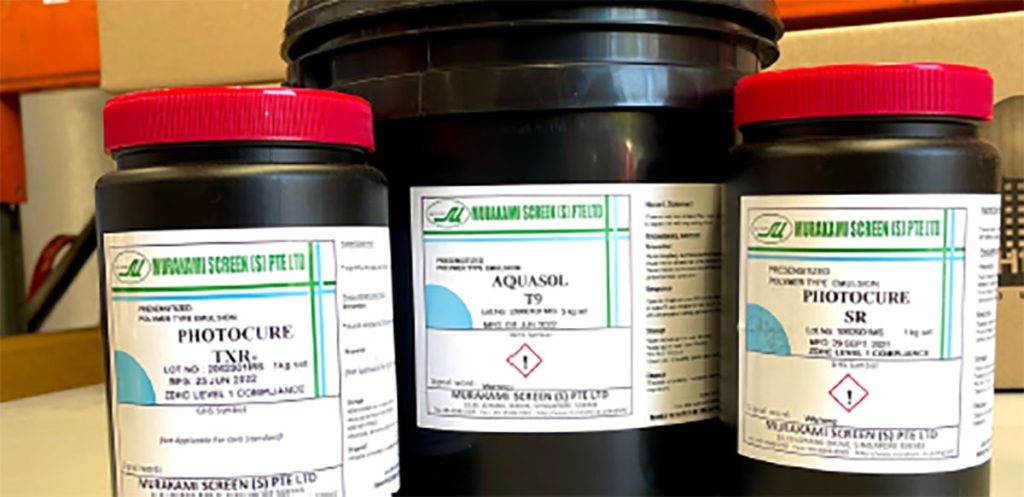
Tips for a better exposure
- We recommend not to skimp out on high quality film positives. Having a film positive with a high density of black will provide a sharper stencil that equates to sharper, higher quality prints. It also allows you to give a full exposure for a more resilient stencil.
- Finally, practice coating your screens. It may sound silly, but coating your screen is the first thing you’ll learn in screen printing, for good reason. Your stencil should be smooth, not too thick and even across the whole mesh area. Once you’re a well-practiced screen coater you can create sharper stencils and use less emulsion in the long run.
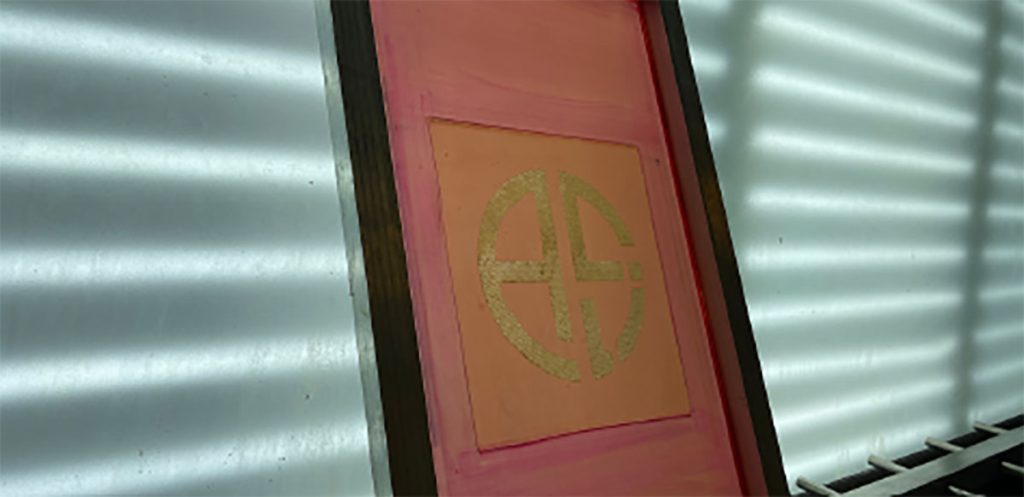
How Emulsion Works – For Beginners
Product Recommendations
For Textile & Garments
Chromaline
- ChromaLime (plastisol only)
- CP Tex (waterbased & plastisol)
Murakami
- Photocure TXR (waterbased & plastisol)
- T9 – Our favourite! (waterbased & plastisol)
For Solvent/UV
Chromaline
- UDC ACE
- MagnaCure Max-R
Murakami
- SR
Saati
- Grafic

